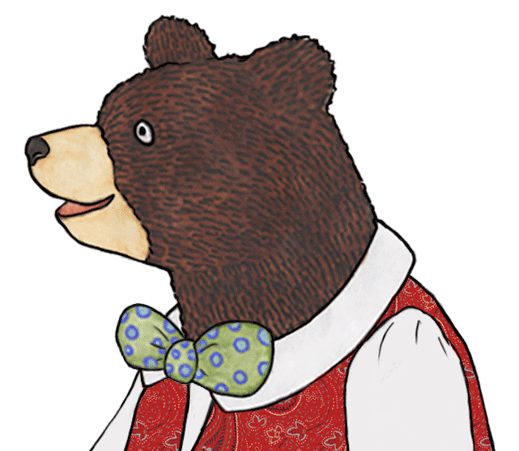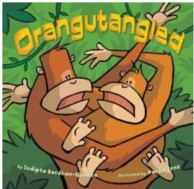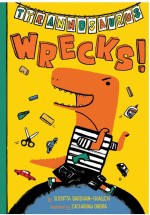The Webinar is one week from today…Don’t miss it!
Join us for our special “3 Things You Must Know About Writing Rhyming Kids’ Books” webinar, on Friday, April 25th, at 6:00 PM! Pacific Time
*
Link for the live webinar
https://wj168.infusionsoft.com/app/page/free_poetry_webinar
*
Reserve your spot today for this important event hosted by Sudipta Bardhan-Quallen and Dr. Mira Reisberg to learn about:
• The 3 critical things people who rhyme need to know
• How poetic techniques can improve your own writing whether you write in rhyme or not.
• Meet the amazing Sudipta Bardhan-Quallen, author of Chicks
Run Wild, Hampire and 34 other books.
• Hear from Dr. Mira Reisberg, Agent/Children’s Book Academy founder as she shares some of the pleasures of poetry.
*
Mira and Sudipta have invited RhyPiBoMoers as their
special guests so reserve your spot now by clicking the link above!
*
Today’s guest blogger is an amazing writer who has published over 34 books…that’s a lot of writing wisdom and talent, all wrapped up in one person! I am so pleased to have her here to share a bit of her writing knowledge with us!
*
So, without further ado, I’m honored to present today’s
Golden Quill Guest Blogger
Sudipta Bardhan-Quallen!
*
*
Sing A Different Tune and Make Your Rhyme Sing
*
I struggled with the title of this post. I wanted to create something catchy, something idiomatic, something that tied into the theme of my post, about songwriting vs. writing in rhyme and what one can teach us about the other. I’m not sure that really worked, but at least now you have an introduction to what I’ll be talking about.
*
If you’re interested in writing picture books in rhyme, you’ve probably already heard someone tell you to make your rhyme sing!” That advice, though well-intended, often gets across the wrong point. People start to think that rhyming picture books should sound like songs. And why not? Song lyrics rhyme. They flow to the beat of the music. So if your picture book text sounds like song lyrics, you’re on the right track, no?
*
The answer is NO.
*
Songwriting is a beautiful art. But if you follow the same rules that song writers do, you won’t end up with a very good picture book – and not just because picture book writers use fewer repetitions of “baby,” “ooh,” and “tonight.” The thing is, picture book writers have to be much more strict about the rules of rhyme and meter – we don’t get away with the things that songwriters get away with.
*
Here are some lyrics from Collide, written by Kevin Griffin and Howie Day (I like using this refrain as an example because it actually references when “the wrong words seem to rhyme”!):
*
[The first refrain]
Even the best fall down sometimes
Even the wrong words seem to rhyme
Out of the doubt that fills my mind
I somehow find
You and I collide
*
[the second refrain]
Even the best fall down sometimes
Even the stars refuse to shine
Out of the back you fall in time
I somehow find
You and I collide
*
The rhyme scheme in the first iteration of the refrain is AABBC (I’m giving the songwriters a pass on the near rhyme of “sometimes” and “rhyme”), but then the second time around, it becomes ABACD. Very, very inconsistent (and, if I can say, lots of wrong words that only seem to rhyme!). Now, there is assonance in all these end words (sometimes/rhyme/mind/find/collide and sometimes/shine/time/find/collide), and in the context of the song, the assonance works. But assonance isn’t rhyme, and when you just try to read the lyrics, they don’t sound as good without the music.
*
When you look at the meter, the songwriters become even more inconsistent. When the lyrics are sung, the stressed fall on the bolded syllables:
*
Even the best fall down sometimes
Even the wrong words seem to rhyme
Out of the doubt that fills my mind
I somehow find
You and I collide
*
The singer speeds though the extra syllables of “even the” and “out of the” and then uses a long pause and filler music to create an extra beat between the end of the 4th line and the beginning of the 5th.
*
When we write a rhyming picture book, we don’t get to fill in gaps with extra music, or speed through extra syllables to make the rhythm consistent.
*
When we write a rhyming picture book, we don’t get to use assonance or consonance in the place of true rhymes.
*
If you want your rhyming picture book to sing, you have to avoid writing it like a song.
*
After telling you everything about songwriting you shouldn’t repeat in your picture book, let me just tell you one thing that songwriters get really right: the refrain.
*
Most songs are arranged roughly like this:
First verse
Refrain
Second verse
Refrain
Bridge
Refrain
*
Structurally, the refrain helps to delineate different sections/verses of the song – it signals the listener that the previous verse has ended and he is about to hear a new verse. Sometimes the refrain is identical in every iteration. But more often, the refrain alters slightly every time we hear it – and the alteration supports the narrative of the song.
*
Here’s the first refrain of Taylor Swift’s You Belong With Me:
*
If you could see that I’m the one who understands you.
Been here all along. So, why can’t you see—
You belong with me, you belong with me?
*
The last time, however, the refrain changes slightly:
*
Can’t you see that I’m the one who understands you?
Been here all along. So, why can’t you see—
You belong with me?
*
Even if you don’t know the song, you could probably tell that at the beginning, she is trying to convince him to see she’s the one for him – and by the end, she’s frustrated that he still doesn’t see it. Just the subtle change in the wording of the refrain really drives that home.
*
If you’re looking for examples of the refrain done well in picture books, study Karma Wilson’s BEAR SNORES ON, Bill Martin, Jr’s CHICKA CHICKA BOOM BOOM, and maybe even my CHICKS RUN WILD.
*
In Conclusion
*
You’re getting lots of great tips this month on writing great rhyming picture books. It truly is an art form, and a distinct art form from anything else. If nothing else, I hope this post helps you see our art as being as unique as it truly is!
*
PS
For a really interesting read, check out this article in Slate called What is the most common rhyme in the history of pop music? (by Ben Blatt).
*
*
Here are some of the rhyming pairs Mr Blatt references:
*
Do/You
Be/Me
Me/See
True/You
Baby/Me
Go/Know
Through/You
Around/Down *
Night/Right
Mind/Time *
To/You
Mine/Time *
Day/Way
Free/Me
Away/Day
Say/Way
Away/Say
Too/You
Be/See
Gone/On
*
Don’t tell Mr Blatt, but none of the pairs marked with an asterisk actually rhymes.
*
*
Bio:
Sudipta Bardhan-Quallen is an award-winning children’s book author whose books include Duck Duck Moose, Orangutangled, Snoring Beauty, and Tyrannosaurus Wrecks. She visits schools around the country to talk about the craft of writing to children of all ages. “Every book is an autobiography” is a favorite saying of hers, and a big part of her message is that everyone, grownup or child, has a story that is interesting and compelling — if you can find the right words to tell it. Sudipta lives outside Philadelphia with her children and an imaginary pony named Penny. You can learn more about her and her books on her website http://www.sudipta.com or at her blog http://www.NerdyChicksRule.com.
*
Here are just a few of Sudipta’s Books…
*
*
Thank you Sudipta Bardhan-Quallen!
~~~~~~~~~~~~~~~~~~~~~~~~~~~~~~~~~~~~~~~~~~~~~~~~~~~~~~~~~~~~~~~~~~~~~~~~~~~~~~~~~~~~~~~
RhyPiBoMo Daily Lesson: Friday, April 18th
By Angie Karcher © 2014
Lesson 20
*
*
More Feet?
*
Yes, 2 more…
*
The reason that there are so many types of feet is that there is a need in poetry to express a variety of emotions and actions. These rhythms enable poets to examine rhythmic patterns and express these in commonly understood terms.
*
*
Dacty – is a metrical foot consisting of one long and two short syllables or of one stressed and two unstressed syllables. Dactylic rhythm is the direct opposite of trochaic in that it has one hard beat followed by two soft beats as can be heard in the word HAP-pen-ing. The first syllable “hap” is hard and the last two, “pen” and “ing” are soft. (write this down)
*
Pronunciation: Dak-tull
The stressed syllables are in all caps
*
For example:
Henry Wadsworth Longfellow’s poem Evangeline, which is in dactylic hexameter:
*
THIS is the / FOR-est prim- / E-val. The / MUR-mur-ing / PINES and the / HEM-locks/
*
Dactyl/Dactyl/Dactyl/Dactyl/Dactyl/Trochee
*
LONG-short-short/ LONG-short-short/ LONG-short-short/ LONG-short-short/LONG-
*
short-short/LONG-short-short/
*
DUM-da-da/DUM-da-da/DUM-da-da/DUM-da-da/DUM-da-da/DUM-da-da/
*
For example:
Robert Browning’s The Lost Leader – 1st line
*
JUST for a/HAND-ful of/SIL-ver he/left us
*
*LONG-short-short/ LONG-short-short/ LONG-short-short/LONG-short/
*
Dactyl/Dactyl/Dactyl/Trochee
*
DUM-da-da/DUM-da-da/DUM-da-da/DUM-da
*
Foot Type Style Stress pattern Syllable Count
Dactyl/Dactylic Stressed + Unstressed + Unstressed Three
~~~~~~~~~~~~~~~~~~~~~~~~~~~~~~~~~~~~~~~~~~~~~~~~~~~~~~~~~~~~~~~
Anapest – is a metrical foot composed of two unaccented syllables followed by one accented syllable or two short syllables followed by one long one, as in the word se-ven-TEEN.(write this down)
*
Pronunciation: Ann-uh-pest
The stressed syllables are in all caps
*
For example:
Clement Clarke Moore’s Twas the Night Before Christmas
*
twas the NIGHT/ be-fore CHRIST/mas, when ALL/ through the HOUSE/
short-short-LONG/short-short-LONG/short-short-LONG/short-short-LONG
da-da-DUM/da-da-DUM/da-da-DUM/da-da-DUM/
*
*
not a CREA/ture was Stir/ring not E/ven a MOUSE/
short-short-LONG/short-short-LONG/short-short-LONG/short-short-LONG
da-da-DUM/da-da-DUM/da-da-DUM/da-da-DUM/
*
Foot Type Style Stress pattern Syllable Count
Anapest/Anapestic Unstressed + Unstressed + Stressed Three
~~~~~~~~~~~~~~~~~~~~~~~~~~~~~~~~~~~~~~~~~~~~~~~~~~~~~~~~~~~~~~~~~
Writing Prompt:If you want some real practice, divide this familiar poem into feet as above. This may be easier for you to hear the stressed and unstressed syllables as it is a familiar poem that is normally recited out loud.
*
*
Twas the night before Christmas, when all thro’ the house,
Not a creature was stirring, not even a mouse;
The stockings were hung by the chimney with care,
In hopes that St. Nicholas soon would be there;
The children were nestled all snug in their beds,
While visions of sugar plums danc’d in their heads,
And Mama in her ‘kerchief, and I in my cap,
Had just settled our brains for a long winter’s nap-
When out on the lawn there arose such a clatter,
I sprang from the bed to see what was the matter.
Away to the window I flew like a flash,
Tore open the shutters, and threw up the sash.
The moon on the breast of the new fallen snow,
Gave the lustre of mid-day to objects below;
When, what to my wondering eyes should appear,
But a minature sleigh, and eight tiny rein-deer,
With a little old driver, so lively and quick,
I knew in a moment it must be St. Nick.
More rapid than eagles his coursers they came,
And he whistled, and shouted, and call’d them by name:
“Now! Dasher, now! Dancer, now! Prancer, and Vixen,
“On! Comet, on! Cupid, on! Dunder and Blixem;
“To the top of the porch! to the top of the wall!
“Now dash away! dash away! dash away all!”
As dry leaves before the wild hurricane fly,
When they meet with an obstacle, mount to the sky;
So up to the house-top the coursers they flew,
With the sleigh full of Toys – and St. Nicholas too:
And then in a twinkling, I heard on the roof
The prancing and pawing of each little hoof.
As I drew in my head, and was turning around,
Down the chimney St. Nicholas came with a bound:
He was dress’d all in fur, from his head to his foot,
And his clothes were all tarnish’d with ashes and soot;
A bundle of toys was flung on his back,
And he look’d like a peddler just opening his pack:
His eyes – how they twinkled! his dimples how merry,
His cheeks were like roses, his nose like a cherry;
His droll little mouth was drawn up like a bow,
And the beard of his chin was as white as the snow;
The stump of a pipe he held tight in his teeth,
And the smoke it encircled his head like a wreath.
He had a broad face, and a little round belly
That shook when he laugh’d, like a bowl full of jelly:
He was chubby and plump, a right jolly old elf,
And I laugh’d when I saw him in spite of myself;
A wink of his eye and a twist of his head
Soon gave me to know I had nothing to dread.
He spoke not a word, but went straight to his work,
And fill’d all the stockings; then turn’d with a jerk,
And laying his finger aside of his nose
And giving a nod, up the chimney he rose.
He sprung to his sleigh, to his team gave a whistle,
And away they all flew, like the down of a thistle:
But I heard him exclaim, ere he drove out of sight-
Happy Christmas to all, and to all a good night.
*
*
Okay, now do everything else on the pledge for today and don’t forget to comment on today’s blog post!








I write songs & use near rhyme in them all the time –
maybe I’m crazy,
maybe I’m a fool
but hey, I’m okay
without you…
When I sing it “fool” is stretched way out & so it sounds more like it rhymes with “you” which is not stretched. Plus the stressed words fall on the stressed beat… and the story matters a bit less.
It’s always nice when my kids sing along…
Ahh, Sudipta – make it sing, but not like a song! Somehow I think I actually have it. This reminds me of a year ago when I was struggling with editors saying they didn’t want “sing-song” rhyming picture books.
Great post, as always!
Great blog post today!
Another meaty post! So much to learn! Thank you.
Thanks once again.
Thank you so much, Sudipta…you know what you are talking about…that’s for sure! Lots for us to learn…thank you, Angie, for providing this amazing RhyPiBoMo workshop. And I’m looking forward to the webinar!
Thank you, Sudipta and Angie.
I appreciate having my umbrage at bad rhyme in songs validated. Thanks for another great lesson and the continued enthusiasm and cheerleading!
Thanks Sudipta for the great advice.
Thanks Angie.
Happy Easter to all and to all a good night!
Thanks Sudipta for the lesson. Angie, release stress now and breathe. This blog is fantastic. A pat on the back is in order.
Thank you Sudipta for the reminder that songwriters are NOT rhyming honestly.
More interesting authors, and I do enjoy reading the poem The Night Before Christmas.
Thanks Sudipta. I do want my PB to sing. Angie, keep the drills coming.
Thanks, Sudipta. I think I get it now! And thanks, Angie! So much great information!
Another great post. I went to the library to read picture books the other day and it was CLOSED!! Looking forward to Monday when my local branch will reopen.
I like when a picture book sings. Finding the stressed syllable is harder than it seems. In a song it is easier.
I dare anyone not to read the anapest example out loud. 🙂
Thanks, Sudipta and Angie!
I’m not sure I agree 100% with the comparisons between made between songwriting and rhyming picture books– specifically the implication that songwriting is somehow easier and rhyming picture book writers are held up to higher standards– seems a bit reckless to generalize in this way since the genres are different in many ways besides what’s been spoken about here. Still, I appreciate the point being made that we should avoid lazy rhyme and meter at all costs.
Just trying to “catch up” with some RhyPiBoMo posts. Once again, [I am sure I am repeating myself], yet another great lesson by Angie. Sudipta: I will not tell Mr. Blatt. 😉 Your words of wisdom are appreciated and so are your books. ~Suzy Leopold
Great points regarding songs vs. poems from Sudipta. It’s interesting to see how songwriters can get away with near/slant rhymes or just assonance to carry a song, and the way a singer delivers the words influencing whether a song sounds like it rhymes. I love the idea of using a refrain in a book, but I haven’t quite mastered that skill yet.
Enjoyed the link to the Beatles and Justin Bieber. Thanks Sudipta and Angie.